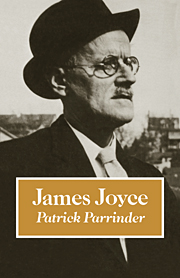10 - The nightmare of history
Published online by Cambridge University Press: 15 September 2009
Summary
Work in Progress
Joyce had spent most of the First World War in Zurich. After the war he returned to Trieste, but soon moved to Paris, where he was to stay until 1939. In Paris he was no longer a lone exile: the city was becoming a legendary home for expatriate American and English writers. It was here that Ulysses found a publisher, and on 2 February 1922, the morning of his fortieth birthday, he received the first two copies. His sense of fulfilment, however, was short-lived. The most arduous task of his life was about to begin.
In Paris Joyce's reputation as a banned writer made him an instant literary celebrity. He became an acknowledged leader of the avantgarde. At the same time, he was less far removed from Dublin, and began to meet a steady flow of visitors from Ireland. One of the first, Desmond Fitzgerald, was Minister of Information in the new Free State government. Fitzgerald asked him if he would return to Ireland now that the twenty-six counties had received their independence, but Joyce refused for the time being. Soon afterwards Nora Barnacle and his children went home on a visit, in the course of which they were caught in crossfire between Free State troops and the rebel forces of De Valera. Echoes of the ‘devil era’ (FW 413:8) and the Irish Civil War are to be found throughout Finnegans Wake.
- Type
- Chapter
- Information
- James Joyce , pp. 199 - 218Publisher: Cambridge University PressPrint publication year: 1984

